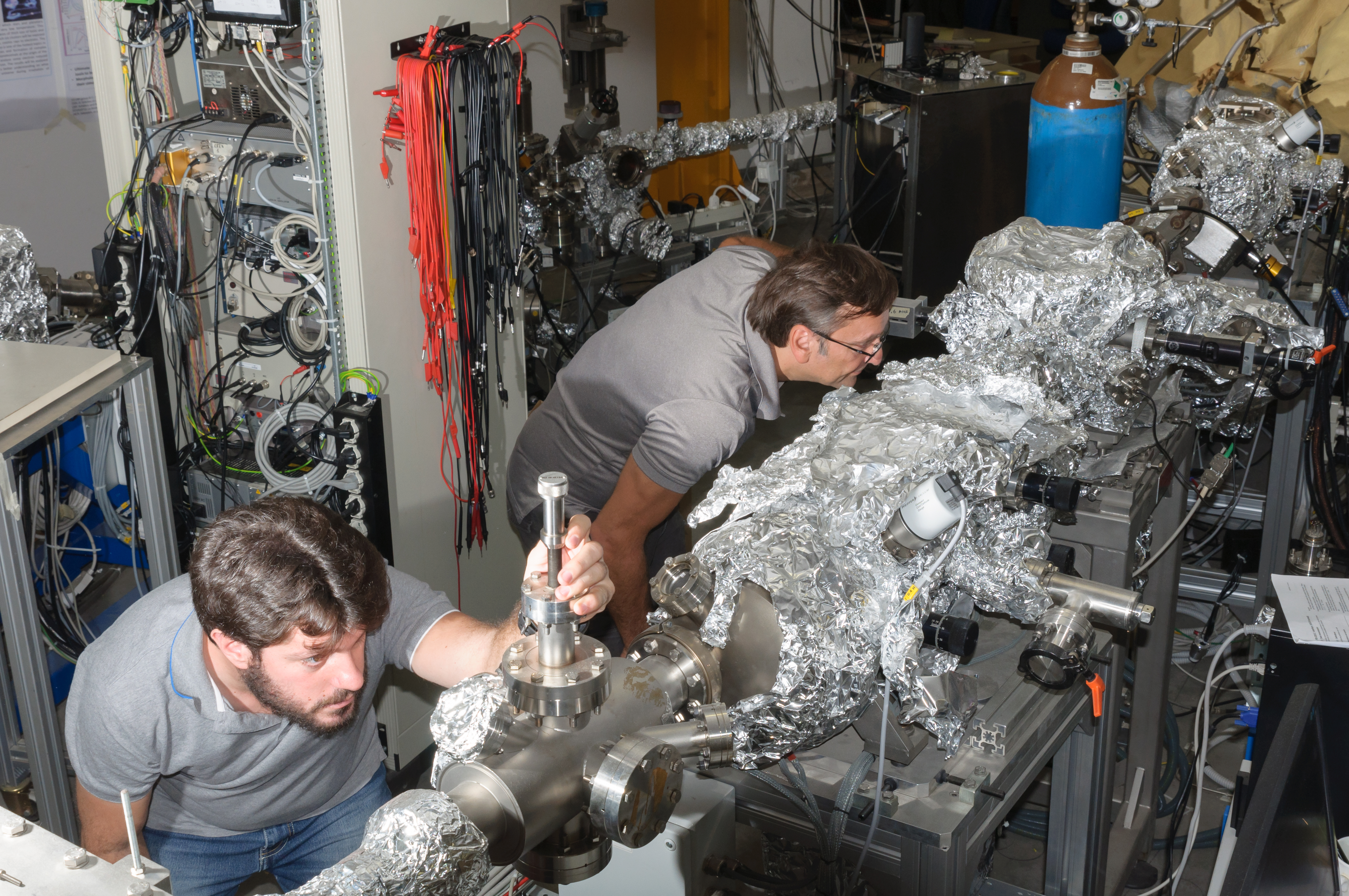
The study of ice forming at low temperature on the interstellar dust at the origin of the planetary systems has been carried out by a collaboration among the LERMA Laboratory (Sorbonne, Paris), the CNRS “Laboratoire de Chimie Physique” of the Paris-Saclay University, the CERN of Geneva and the INFN Frascati National Laboratories.
Specifically, the LNF researchers, Marco Angelucci and Roberto Cimino, are involved in this investigation, together with the CERN, studying the behaviour of the gases absorbed by the cold walls of the Large Hadron Collider (LHC) and of the future large accelerators. The analysis of these ice and their behaviour, whether irradiated by a different wavelength light, is of great value in astrophysics, since the parameters governing ice desorption and emission are at the basis of databases used to study the Universe.
This work is one example of how detailed and state-of-the-art studies about issues technologically relevant can have a significant impact in scientific areas which are not directly related to them. This investigation is funded both by the INFN, at national level, and by EuroCirCol, in the framework of Horizon 2020, at European level.
The importance and innovativeness of the work has meant that the results were published last 16th of July on the “Nature Astronomy” magazine with an article titled “X-ray photodesorption from water ice in protoplanetary disks and X-ray-dominated regions”. The work presents the first quantitative measurement (performed at the French synchrotron Radiation Facility “Soleil”) of the desorption stimulated using synchrotron radiation at the oxygen K edge (~ 520 eV), from water ice. Photons of this energy are present on the outer layers of protoplanetary disks of interstellar dust and must be taken into account for a correct evaluation of many of the parameters derived from the experimental observations of the Universe. Photons of this energy are also present in the existing accelerating machines or in the ones currently being designed and their impact on vacuum and on particle beam dynamics will require further detailed studies, pushing to maintain and strengthen the synergy between accelerator physicists and astrophysicists.
Translation by Camilla Paola Maglione, Communications Office INFN-LNF
 INFN-LNF Laboratori Nazionali di Frascati
INFN-LNF Laboratori Nazionali di Frascati